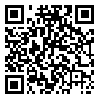Volume 2, Issue 4 (2018)
JCSFA 2018, 2(4): 125-149 |
Back to browse issues page
Download citation:
BibTeX | RIS | EndNote | Medlars | ProCite | Reference Manager | RefWorks
Send citation to:



BibTeX | RIS | EndNote | Medlars | ProCite | Reference Manager | RefWorks
Send citation to:
karamad R, mirzaineya H. The concept of “Freedom” in the poems of Nizar Qabbani & Ahmad Shamlu. JCSFA 2018; 2 (4) :125-149
URL: http://jcsfa.modares.ac.ir/article-39-35685-en.html
URL: http://jcsfa.modares.ac.ir/article-39-35685-en.html
Abstract: (7339 Views)
There are many similarities in the ups and downs of social and literary life of Nizar Qabbani, Arabic poet, and Ahmad Shamlu who is Iranian poet. This article examine concept of freedom in the poems of these two poets to consider differences and similarities of thought of the poets in this issue. People and rulers share in the acquisition and preservation of liberty, which these two poets have focused on both of them, using the symbol and the combination of lyrical concepts and political and social concepts, have presented their subject. Shamlu praises the freedom-loving people and defines “poverty” as lack of freedom. Qabbani tries to summon the people of the Arab lands to reform their affairs. he blames the heads of Arabic countries more, but does not name a certain person and notes the danger of the Jews. Ahmad Shamlu and Nizar Qabbani believe that gunfight is one of the ways which can be achieved freedom through it. So, they loathe silence of people against cruelty, autocracy and injustice, and they blame or chide and sometimes humiliate people for that. Both poets condemn autocracy and additionally they show their unique talent and genius in describing “freedom”. Clarity and simplicity of Nizar’s poems and mysterious and elusive words in Shamlu’s poesies are the characteristics of these two poets in the concept of freedom.
Keywords: Nizar Qabbani’s poem, Ahmad Shamlu’s poem, Comparison of Iranian and Arabic poetry, Contemporary Iranian and Arabic poetry.
Article Type: Original Research |
Received: 2018/01/21 | Accepted: 2019/03/2 | Published: 2019/08/15
Received: 2018/01/21 | Accepted: 2019/03/2 | Published: 2019/08/15
| Rights and permissions | |
 |
This work is licensed under a Creative Commons Attribution-NonCommercial 4.0 International License. |







